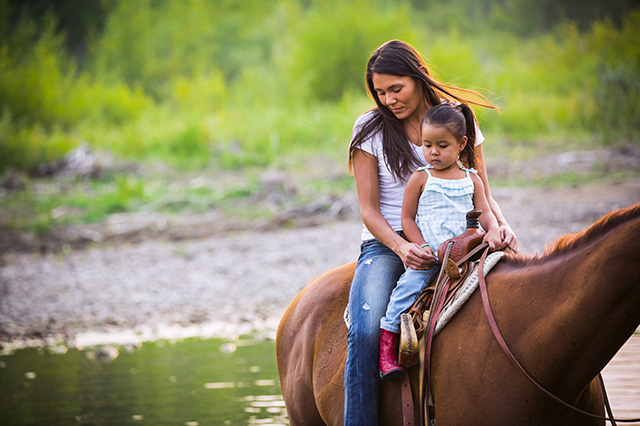
For more than 10,000 years, the Badger-Two Medicine area near Glacier National Park in Montana has provided strength, subsistence and cultural identity for members of the Blackfeet Nation. The Blackfeet believe that their people were created among the mountains and springs that rise from where Badger Creek and the Two Medicine River trace their headwaters.
But the Blackfeet aren’t the only ones who value the region. The oil and gas industry also have their eyes on the area – and for more than 30 years, they’ve been fighting to drill the hell out of it.
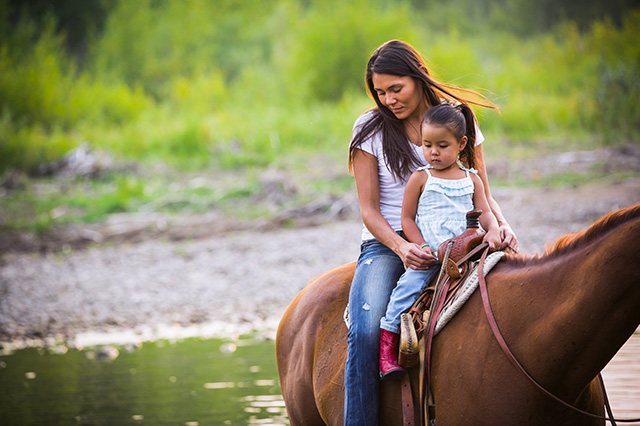 Edmo, with her 2-year-old daughter, in the Badger-Two Medicine area. (Photo: Rebecca Drobis / Earthjustice)
Edmo, with her 2-year-old daughter, in the Badger-Two Medicine area. (Photo: Rebecca Drobis / Earthjustice)
Kendall Edmo, a Blackfeet tribal member, became involved in the fight to protect the Badger-Two Medicine area after learning about the region’s cultural significance to her people – and the threat of oil and gas drilling.
During her childhood, Edmo wasn’t immersed in the Blackfeet language or traditional ways. That changed after she graduated from college and returned to the reservation.
 Edmo with her daughter, at her family home in Two Medicine on the Blackfeet Reservation. (Photo: Rebecca Drobis / Earthjustice)
Edmo with her daughter, at her family home in Two Medicine on the Blackfeet Reservation. (Photo: Rebecca Drobis / Earthjustice)
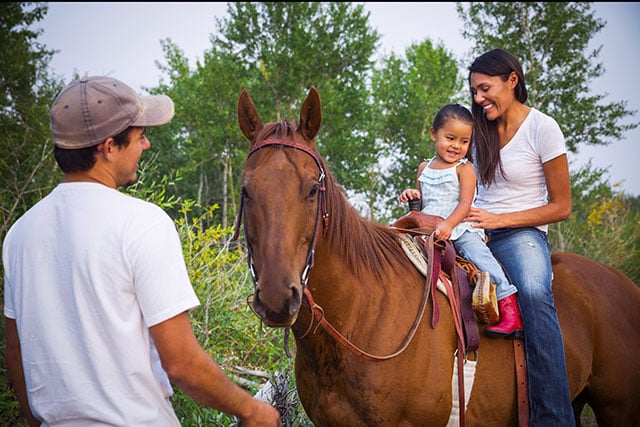 Edmo with her daughter, at her family home. (Photo: Rebecca Drobis / Earthjustice)
Edmo with her daughter, at her family home. (Photo: Rebecca Drobis / Earthjustice)
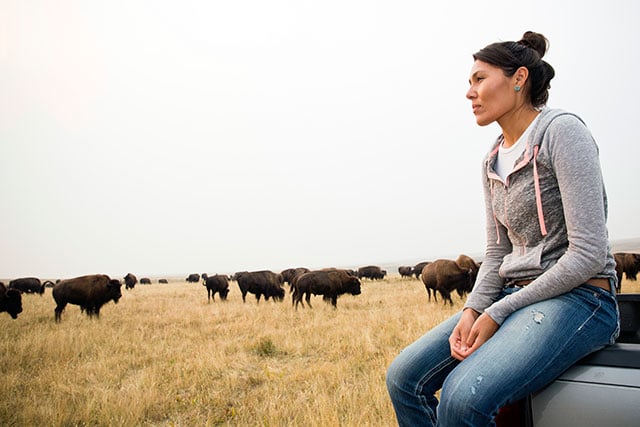 Edmo, who was previously the Bison Project Coordinator for the tribe, watches over bison at the Blackfeet Nation’s Bison Reserve in Browning, Montana. (Photo: Rebecca Drobis / Earthjustice)
Edmo, who was previously the Bison Project Coordinator for the tribe, watches over bison at the Blackfeet Nation’s Bison Reserve in Browning, Montana. (Photo: Rebecca Drobis / Earthjustice)
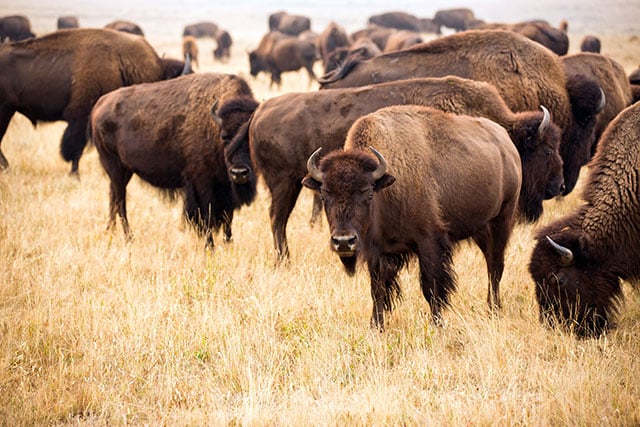 The Blackfeet Tribe’s Bison Reserve in Browning, Montana. (Photo: Rebecca Drobis / Earthjustice)
The Blackfeet Tribe’s Bison Reserve in Browning, Montana. (Photo: Rebecca Drobis / Earthjustice)
As a tribal liaison for the National Parks Conservation Association, Edmo met with tribal elders who took her under their wing and mentored her in Blackfeet history and spirituality. They explained the significance of the Badger-Two Medicine area. “Our cultural connection to this land is deeper than us just occupying it,” Edmo says. “It’s a vital connection to our identity.”
In the 1980s, the Reagan administration issued 47 oil and gas leases in the Badger-Two Medicine area to oilmen for $1 per acre. The leases were granted without tribal consultation, review of significant cultural values or proper evaluation of environmental impact – all required by federal law – and therefore violate both the National Environmental Policy Act and Endangered Species Act.
By 1997, a more conservation-minded Forest Service placed a moratorium on any new oil and gas leases along the Rocky Mountain Front, including the Badger-Two Medicine area. Since then, many companies and leaseholders have voluntarily relinquished their leases. A handful of leases remain, though, sitting in legal limbo over the past three decades due to a series of suspensions by the federal government.
One of those leaseholders is the Solenex company in Louisiana. In June 2013, Solenex sued the federal government, alleging that it had unreasonably delayed the company’s right to develop its lease. The fight to protect the Badger-Two Medicine area took on a new urgency.
The fight over the Badger-Two Medicine area is just one in a long-running series of tribal land grabs initiated by the US government.
Beginning in the mid-1800s, a series of treaties reduced the Blackfeet’s aboriginal homeland by millions of acres. Then in 1895, the Blackfeet lost even more land after a controversial agreement reduced the reservation by another 800,000 acres. This land is located in the “Backbone of the World,” also known as the Rocky Mountain Front, which the Blackfeet consider to be spiritually sacred land. Part of this ceded strip of former reservation land is the Badger-Two Medicine area, one of the Blackfeet’s most sacred places.
Under the 1895 treaty, the tribe sold some mineral rights within the Badger-Two Medicine area to the federal government, but they retained the rights to cut wood, hunt and fish on the land. Some tribal members maintain that they never gave the federal government the right to oil and gas underlying the area. Even if they did, oil and gas drilling threatens the Blackfeet’s long-standing cultural and spiritual interest in this sacred landscape.
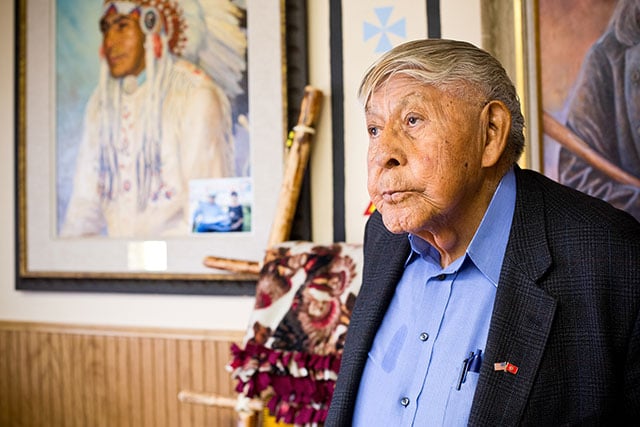 Chief Earl Old Person, in his office in downtown Browning, Montana. Elected to the Blackfeet Tribal Business Council in 1954, Chief Old Person has been an impassioned ambassador for the Blackfeet Tribe for more than six decades. (Photo: Rebecca Drobis / Earthjustice)
Chief Earl Old Person, in his office in downtown Browning, Montana. Elected to the Blackfeet Tribal Business Council in 1954, Chief Old Person has been an impassioned ambassador for the Blackfeet Tribe for more than six decades. (Photo: Rebecca Drobis / Earthjustice)
Blackfeet Chief Earl Old Person has led the Blackfeet people in blocking the Badger-Two Medicine leases and drilling proposals from moving forward for more than 30 years.
In a letter to President Obama, he asked that the administration cancel the remaining leases, explaining that “these ancient lands are among the most revered landscapes in North America and should not be sacrificed, for any price.”
Says Chief Old Person, “These lands, they’re not our lands. But we’re the keepers.”
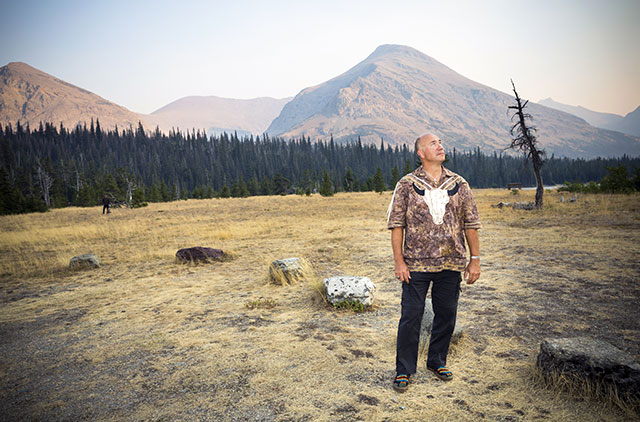 Gladstone, Montana’s Blackfeet Troubadour, by Two Medicine Lake. (Photo: Rebecca Drobis for Earthjustice)
Gladstone, Montana’s Blackfeet Troubadour, by Two Medicine Lake. (Photo: Rebecca Drobis for Earthjustice)
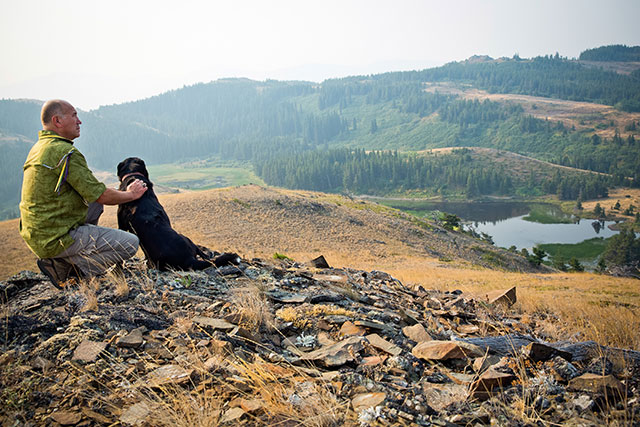 Gladstone hikes in the Badger-Two Medicine area on the Blackfeet Reservation in northwest Montana. Gladstone uses the area for traditional native practices and ceremonies. (Photo: Rebecca Drobis / Earthjustice)
Gladstone hikes in the Badger-Two Medicine area on the Blackfeet Reservation in northwest Montana. Gladstone uses the area for traditional native practices and ceremonies. (Photo: Rebecca Drobis / Earthjustice)
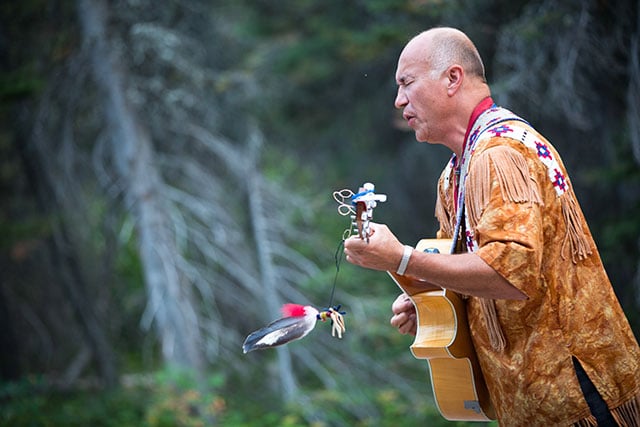 Gladstone performs at Two Medicine campground, on the border of Glacier National Park and the Badger-Two Medicine. (Photo:Rebecca Drobis / Earthjustice)
Gladstone performs at Two Medicine campground, on the border of Glacier National Park and the Badger-Two Medicine. (Photo:Rebecca Drobis / Earthjustice)
“Our identity, every cell in our bodies from the time of contact, was composed of this landscape,” says Jack Gladstone, who has likened the drilling of the Badger-Two Medicine area to fracking the Sistine Chapel.
Gladstone is a tribal member who tours the country performing songs about American Indian history and heritage. He’s also the founder of the Blackfeet Headwaters Alliance, which works to protect the waters beneath the Blackfeet’s historic tribal lands.
For the Blackfeet, who have lost so much over the past few centuries, the Badger-Two Medicine area remains one of the last strongholds of the tribe’s values. The landscape is a critical part of the oral history, creation stories and ceremonies of the Blackfeet people. For centuries, they have used these mountains and forests to hunt elk and other game, gather plants, collect lodge poles and search for supernatural powers. Today, many tribal members travel to the Badger-Two Medicine area for prayer and vision quests.
When the Reagan administration first issued the Badger-Two Medicine area leases, wildlife biologists, hunters and other Montanans joined the tribes to protest the decision. Lou Bruno was one of them.
Originally from New York, Bruno moved to East Glacier, Montana, in 1975 after growing tired of seeing wild places taken over by industrial development. One cold night in 1984, he attended a public meeting about a proposed oil and gas lease in the Badger-Two Medicine area. After that meeting, it became clear to Bruno that the Forest Service was intent on drilling the land rather than managing it as a public resource that creates the greatest good for the most people.
“I felt like it was happening all over again – that I had come to a place only to see it destroyed – and this time I wasn’t going to let it happen,” he says.
Shortly after, Bruno and others created the grassroots, nonprofit organization Glacier-Two Medicine Alliance. The group has raised awareness about the Badger-Two Medicine area and successfully appealed the government leases for three decades.
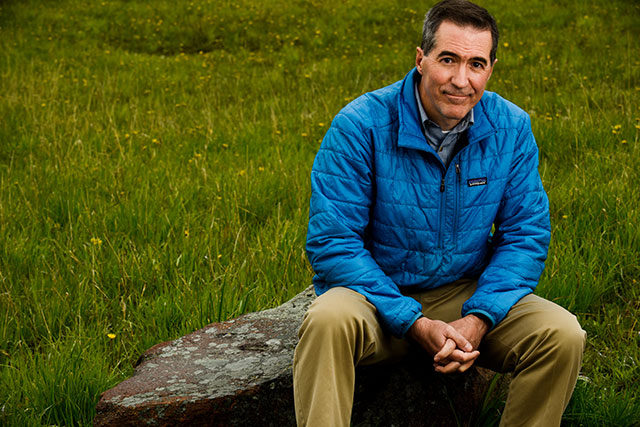 Preso, in Paradise Valley, Montana. (Photo: Mike Greener / Earthjustice)
Preso, in Paradise Valley, Montana. (Photo: Mike Greener / Earthjustice)
Earthjustice’s Tim Preso has spent most of the past two decades using the courts to protect wildlife and wild lands in the northern Rocky Mountains region. As managing attorney of the Northern Rockies office in Bozeman, Montana, his team has successfully protected species including wolves, grizzly bears and bison.
“It is my privilege to speak for these wild places and wild creatures in the federal court system,” says Preso.
In 2015, the Blackfeet Headwaters Alliance and the Glacier-Two Medicine Alliance – both represented by Earthjustice – joined 10 conservation organizations in supporting the Blackfeet tribe’s request that the government cancel all oil and gas leases in the Badger-Two Medicine area.
The legal question at hand is whether the remaining oil and gas leases in the Badger-Two Medicine area were ever valid in the first place. According to Preso, they were not.
In the 1980s, at the same time that the Badger-Two Medicine area leases were issued, the government issued similarly flawed leases in Montana elsewhere along the Rocky Mountain Front. A federal court has since ruled that these leases were illegal and subsequently cancelled them. Earthjustice has requested that the government cancel the Badger-Two Medicine area leases on the same grounds.
“All of these leases are cut from the same cloth and should share the same fate,” explains Preso.
While Earthjustice’s Preso builds his legal case, the Blackfeet are building a movement, drawn together by the collective outrage over the oil industry’s demands to drill such a treasured landscape.
The loss of cultural connections to primary religious lands is a concern for many American Indian tribes. The Blackfeet’s use of the Badger-Two Medicine area has been unbroken over time, and they feel they must protect it – not just for themselves, but for future generations. To that end, the entire Blackfoot Confederacy, the National Congress of American Indians and all tribal nations in Montana and Wyoming have vowed to protect it.
Montana Democratic Senator Jon Tester and the band Pearl Jam have also thrown in their support. In addition, thousands of people have signed a petition asking Secretary of the Interior Sally Jewell and Secretary of Agriculture Tom Vilsack to cancel the leases.
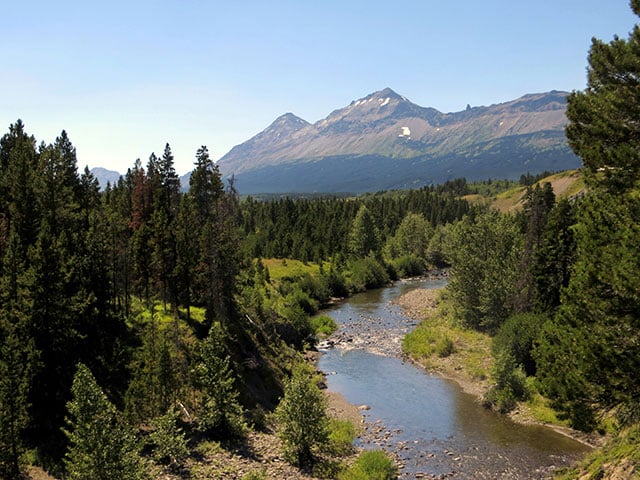 Two Medicine River, in the Badger-Two Medicine area. (Photo: Gene Sentz)
Two Medicine River, in the Badger-Two Medicine area. (Photo: Gene Sentz)
In September 2015, the Advisory Council on Historic Preservation recommended that the government cancel the Solenex lease along with the other remaining leases in the area after determining that oil and gas development would ruin the area’s cultural and traditional values for the Blackfeet.
Though not legally binding, government agencies must consider this recommendation and respond to the council’s findings prior to making a final decision on the lease. The Forest Service has committed to providing its recommendation to the Bureau of Land Management by October 31. From there, the Bureau has until November 23 to determine whether to allow development or cancel the leases permanently.
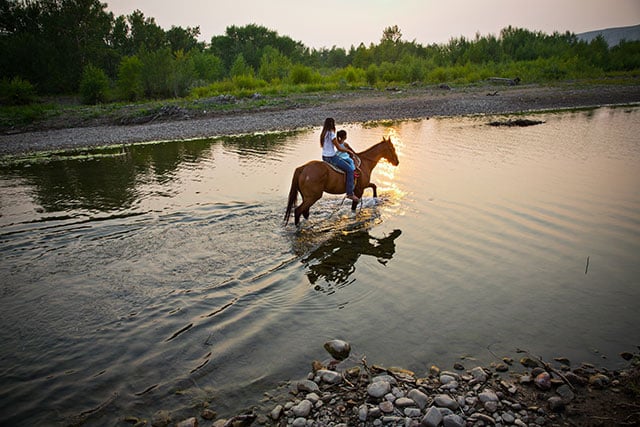 Edmo with her daughter, as the sun sets on another day in the sacred Badger-Two Medicine area. (Photo: Rebecca Drobis / Earthjustice)
Edmo with her daughter, as the sun sets on another day in the sacred Badger-Two Medicine area. (Photo: Rebecca Drobis / Earthjustice)
As the next generation steps in to defend the Badger-Two Medicine area, some are pushing to replace drilling rigs with solar panels and wind turbines. This will allow them to harness the earth’s energy sustainably, get the Blackfeet off fossil fuels and return to the decentralization of power as it was in the beginning.
Kendall Edmo hopes to inspire those of her generation and younger generations to learn more about traditional knowledge and sacred landscapes like the Badger-Two Medicine area. She plans to pass on what she’s learned to her son and daughter so that they, too, have a deep physical and spiritual connection to the land.
“Coming from a younger generation doesn’t change the fact that my culture, identity and spirituality is interconnected with our lands. Same goes for my children,” says Edmo. “The Badger-Two Medicine reminds us of who we are and who we were.”
For more on this Earthjustice legal case: Fighting Oil and Gas Development in the Badger-Two Medicine Area.
Join us in defending the truth before it’s too late
The future of independent journalism is uncertain, and the consequences of losing it are too grave to ignore. To ensure Truthout remains safe, strong, and free, we need to raise $31,000 in the next 48 hours. Every dollar raised goes directly toward the costs of producing news you can trust.
Please give what you can — because by supporting us with a tax-deductible donation, you’re not just preserving a source of news, you’re helping to safeguard what’s left of our democracy.